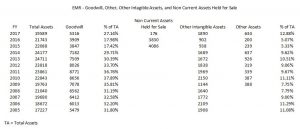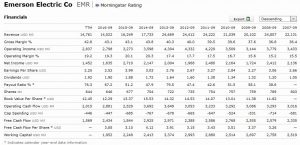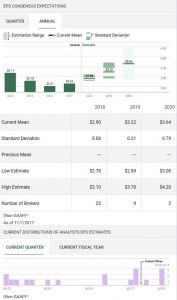Contents
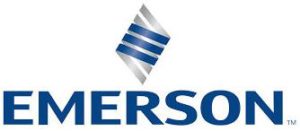 Summary
Summary
- This Emerson Electric stock analysis is based on Q4 and FY2017 results released November 7, 2017.
- FY2017 marks the 3rd year of EMR’s multi-year transformation.
- EMR has continuously increased its annual dividend for ~60 consecutive years. A $0.02 annual dividend increase announced November 7th marks the 3rd consecutive year with a ~1% increase.
- A recent proposal to Rockwell Automation to combine with EMR was rebuffed. I expect EMR to continue to hunt for potential acquisitions.
- EMR appears to be somewhat expensive at ~$63. In my opinion, a~$51 – $54 price range is more appropriate.
Introduction
At the time of my February 8, 2017 Emerson Electric (NYSE: EMR) post, EMR was trading at $62.50 and I deemed the stock to be richly valued. Now that EMR has released its Q4 and FY2017 results, I thought I would revisit EMR to ascertain the quality of our existing EMR investment which is held outside the FFJ Portfolio.
Q4 and FY2017 Results and FY2018 Outlook
EMR’s results and forecast which were released November 7th can be found in this News Release. Readers are also encouraged to review EMR’s presentation which accompanied the conference call.
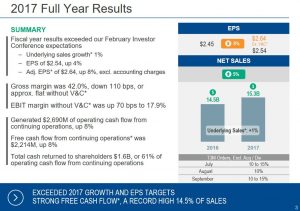
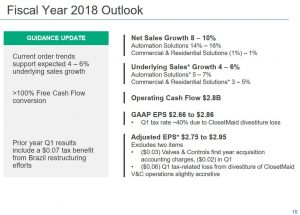 (Source: EMR Q4 2017 November 7, 2017 Earnings Conference Call)
(Source: EMR Q4 2017 November 7, 2017 Earnings Conference Call)
Growth Through Acquisitions
I thought I would devote a section to this article to touch upon the impact acquisitions can have on a company’s financial statements when acquisitions do not materialize as planned.
EMR was founded in 1890 in St. Louis, Missouri, as a manufacturer of electric motors and fans. Over the past 125+ years EMR has completed multiple acquisitions. Typically, when an acquisition is made, a component of the purchase price will be deemed Goodwill. This is an intangible asset that arises when the assets being acquired are not separately identifiable.
Under US GAAP and IFRS, goodwill is not amortized but rather is valued by management annually to determine if impairment is required. Impairment must be recorded to reduce the asset to its fair market value if the fair market value falls below historical cost.
The following chart has been compiled using data extracted from EMR’s 10-K for FY2005 – 2016 and Form 8-K for FY2017.
In 2005 – 2014, Goodwill, Other Intangible Assets, and Other Assets accounted for 40%+ of EMR’s Total Assets. You can see what happened to these soft assets when EMR announced its transformation in 2015.
If you review the notes to the 2015 and 2016 Form 10-Ks you will note there is considerable detail regarding asset write downs and the reclassification of assets. This certainly complicates the review of a company’s financial performance.
EMR is in the process of rebuilding and these soft assets increased in 2017 relative to 2016 results. I recognize the value of acquired assets can truly be worth considerably more than the net book value. I, however, view these “excess above net book value” figures with some element of skepticism.
Recent Attempt to Acquire Rockwell Automation
As part of EMR’s ongoing effort to transform itself, it is seeking to make strategic transformative acquisitions in addition to smaller acquisitions. On October 31, 2017, EMR made a private offer to Rockwell Automation (NYSE: ROK) proposing a combination of the two companies; ROK rejected the proposal and as at the time of writing this article no discussions are ongoing between EMR and ROK.
While EMR is unlikely to pursue ROK any further, I fully anticipate EMR will continue with its acquisition efforts.
Dividend, Dividend Yield, and Dividend/Free Cash Flow Ratio
EMR’s dividend history can be found here. EMR’s dividend yield might currently look attractive at ~3%. I, however, urge readers to look beyond the dividend yield and the enviable track record of annual dividend increases; EMR is a Dividend King having increased its annual dividend ~60 consecutive years. The last three dividend increases have been ~1% with the most recent $0.0005/quarter increase announced November 7th.
Management has specifically stated on quarterly conference calls the importance of maintaining its track record of annual dividend increases.
In the Q3 conference call, management expressed cautious optimism that meaningful dividend increases would resume in 2020 at which time the dividend to Free Cash Flow ratio is expected to be reduced below 50% (~45% is EMR’s preferable target).
In the Q4 conference call, EMR’s management indicated that its operating cash flow target is $2.8B (the objective is to increase this to the $3.3B level) and conversion to free cash flow is projected to be in excess of 100% of net income. While results are certainly on the upswing, the dividend to free cash flow ratio is still somewhat high (~56%) relative to the preferable target noted above.
Given this, investors should temper their enthusiasm for any meaningful dividend increases; negligible annual increases are likely to persist for possibly 3 more years.
While EMR has not rewarded shareholders with any meaningful annual dividend increases in recent years, investors can take some consolation that the share count has evidenced a meaningful reduction. Looking at the chart above you will notice there were 803 million outstanding shares in fiscal 2007. The Form 8-K released November 7, 2017 reflects 640.5 million outstanding shares.
I suspect that had the Rockwell Automation acquisition materialized, the share count would have likely increased since it is unlikely the full purchase price would have been financed primarily with debt. Should another acquisition of any significance be approved/accepted, investors can very well expect the share count to increase.
Valuation
EMR’s FY2018 forecast adjusted EPS range is $2.75 – $2.95; the consensus estimates from 23 brokers is $2.90.
If I use a $2.85 midpoint of EMR’s forecast adjusted EPS range and the November 7, 2017 closing stock price of ~$63, I arrive at an adjusted forward PE of ~22.
When compared to recent historical PE levels, I view EMR as currently trading at a premium.
I am inclined to view an appropriate PE for EMR as being 18 – 19. On this basis, a stock price in the ~$51 – $54 range is probably more appropriate if I use $2.85 as my EPS estimate.
Emerson Electric Stock Analysis – Final Thoughts
I recognize management made the following comment related to its recent attempt to acquire Rockwell Automation:
“Emerson remains a disciplined acquirer and will only pursue transactions that are in the best interests of its shareholders.”
but based on my rudimentary analysis of the “soft assets” in the “Growth Through Acquisitions” section of this article, some historical acquisitions have certainly not benefited EMR shareholders.
While investment analysis should be heavily weighted on the future direction of a company there must be a component where you “look through the rear-view mirror”.
Based on my review, I suggest you pass on investing in EMR if you are not a shareholder or refrain from acquiring additional shares if you are a current shareholder.
EMR’s recent significant challenges as it undergoes a major restructuring are difficult for me to ignore. EMR may certainly be a much improved company once the transformation has been completed but I envision EMR will continue to test my patience within the short-term.
Despite this, I am prepared to be patient since the bulk of our EMR holdings were acquired July 8, 2009 at ~$32; all subsequently received dividends have been automatically reinvested. I recognize I could certainly sell and redeploy the sale proceeds toward more attractive investment opportunities but I am a long-term investor as opposed to a “fair weather” investor (even when I suspect a company is slightly overvalued). Good companies can experience periods of turmoil but as long as I see light at the end of the tunnel, and it does not appear to be an oncoming train, I am willing to bide my time.
I hope you enjoyed this post and I wish you much success on your journey to financial freedom.
Thanks for reading!
Note: I sincerely appreciate the time you took to read this post. As always, please leave any feedback and questions you may have in the “Contact Me Here” section to the right.
Disclaimer: I have no knowledge of your individual circumstances and am not providing individualized advice or recommendations. I encourage you not to make any investment decision without conducting your own research and due diligence. You should also consult your financial advisor about your specific situation.
Disclosure: I and long EMR.
I wrote this article myself and it expresses my own opinions. I am not receiving compensation for it and have no business relationship with any company whose stock is mentioned in this article.


